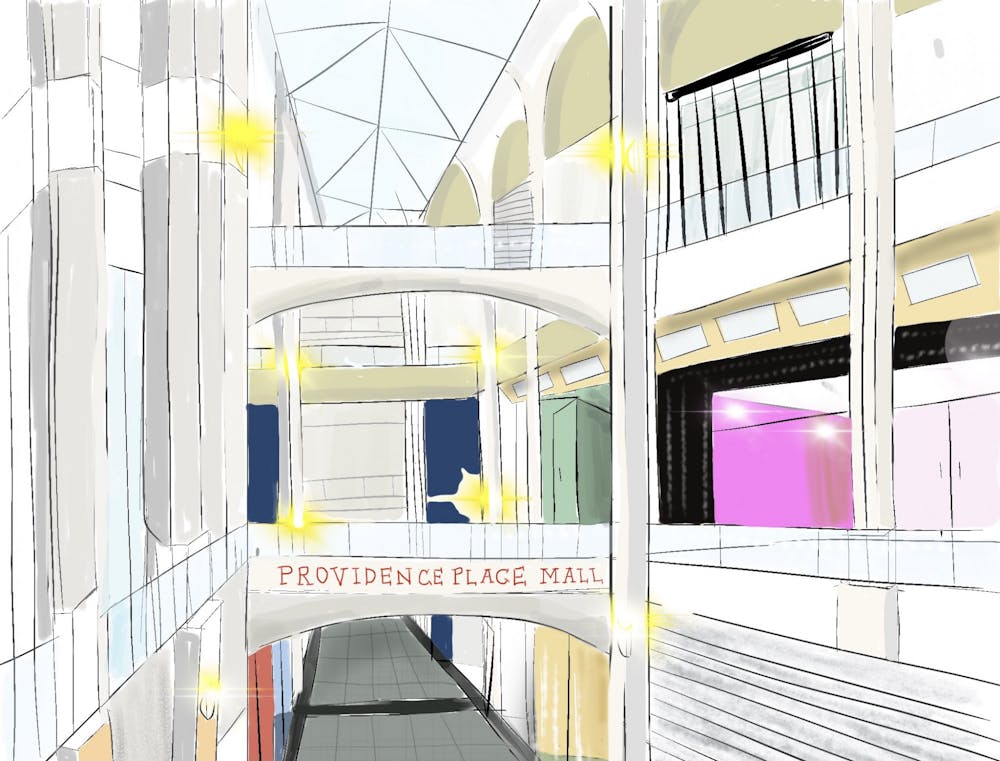Escalators and the fully-carpeted floors at the Providence Place mall are once again bustling with lines of shoppers. But visitors’ experiences have changed drastically since the start of the COVID-19 pandemic, as have the stores they shop at, mall employees and shoppers told The Herald.
These shifts have prompted the development of a forthcoming strategy by the mall to increase business. Last month, the Providence City Council received a proposal for a new tax agreement between the mall and the city, which would allow Providence Place to serve as a space for more than just retail. The mall’s previous arrangement with the city limited its primary use to retail sales.
“The continued growth of e-commerce has required mall owners to reinvent the shopping center experience, and redevelop the environment to become a modern public gathering place that combines retail with office/workplace, dining, entertainment, health and wellness facilities, arts, education, residential, medical, community fulfillment services and together with other commercial uses in one location,” the proposal read.
The proposal includes a 20-year tax treaty that begins in July 2028, under which Providence Place would not owe taxes but would make annual payments of $4.5 million to the city.
Mall management did not respond to multiple requests for comment from The Herald.
Providence Place, like many physical retail businesses, temporarily closed its doors and faced financial troubles during the pandemic. The mall shut down from March to June 2020 and fell behind on its mortgage payments, the Providence Journal reported.
But easing pandemic restrictions have led to more customers, said Brianna Frank, a host and server assistant at the mall’s P.F. Chang’s.
Heather Healey, a resident of East Providence who was getting an early start to Christmas shopping at retailer Aerie with her daughter, said she felt that her experience at the mall is reminiscent of pre-pandemic times. “In the midst of COVID, we had to wait outside in lines to keep the numbers low, but there’s nothing different since it died down,” Healey said.
Safety restrictions particularly impacted business for stores like Sephora, where testing products is an essential part of the shopping experience, said Rachel Benedides, an operations lead at the makeup and skincare chain’s location in the mall. But now that almost all precautions have been lifted — only sample products which can’t be sanitized, such as skincare products in jars, are prohibited — customers have been returning to the store.
“Now it’s getting back to normal,” Benedides said. “Not quite there, but you can feel the energy is getting better.”
Though business is improving, the mall’s operations are not entirely the same as before the pandemic, according to Nashley Marte, a sales associate at clothing store LOFT. “It varies — some days are really, really slow, and other days there’s more traffic,” she said. Even on busier days, stores tend to close earlier than they did before the pandemic began due to a lack of shoppers, Marte said.
Providence Place’s overall loss of shoppers throughout the pandemic mirrors a larger trend of declining malls around the country. The pandemic placed greater pressure on smaller shopping malls struggling with changing consumer habits, The New York Times reported last year.
The closure of department stores, which are crucial for malls, during the pandemic — resulting also from shrinking middle class incomes and online competitors such as Amazon — has severely impacted the success of shopping malls, Vox reported.
The increase in online shopping during the pandemic has also impacted the success of Providence Place, Marte said. “A lot of the time, for the people that do come in, it’s honestly just because they need to try on something they saw online or to return something they bought online,” she added.
Many customers at Sephora also come in after shopping online. “They’ll come in and be like ‘I chose the wrong shade,’” Benedides said.
But some patrons value the experience of shopping in-person, which has allowed for a more recent uptick in business, Benedides said.
“I think there’s something special about one-on-one interactions, doing color matches, getting recommendations from a real life person,” she said. “And then they can see right away what they like.”
Healey often shops at the mall with her daughter, who prefers being in the store to shopping online, she said. “It’s easier especially for the kids to come and try things on,” she said.
Ashlian Lebron, a customer at Designer Shoe Warehouse, came into the mall in October for the first time in months because it was her birthday and she was looking for a fun activity.
“I come here very rarely, just to take a look and see if they have any heels I might like, but I usually just shop online,” Lebron explained. “It’s nice to come in, it’s fun, but I used to do it more often.”
Liliana Greyf is a senior staff writer covering College Hill, Fox Point and the Jewelry District, and Brown's relationship with Providence. She is a sophomore studying Literary Arts and a proponent of most pickled vegetables.





